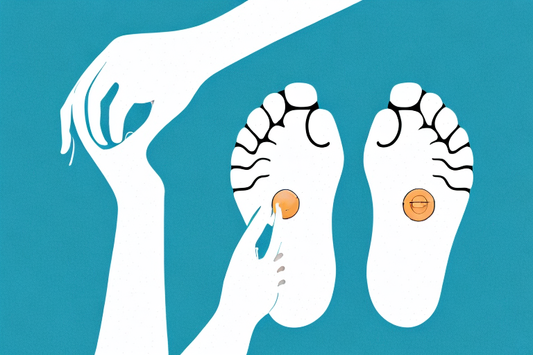
How to Ease Peripheral Neuropathy Symptoms in Feet and Legs with a Peripheral Neuropathy Exercise Routine
Peripheral neuropathy is a condition that affects the nervous system. It is characterized by damage to the peripheral nerves, causing pain, numbness, and tingling sensations mainly in the feet and legs. This condition can be caused by various factors, such as diseases, traumatic injuries, and certain medications. While there is no known cure for peripheral neuropathy, there are several treatment options available. One such option is exercise.
Understanding Peripheral Neuropathy
Peripheral neuropathy is a disorder that affects the peripheral nervous system, which is the system that connects the central nervous system to the rest of the body. It affects the nerves that carry signals between the brain and spinal cord to the muscles, skin, and internal organs.
Causes of Peripheral Neuropathy
Peripheral neuropathy can be caused by various factors, including:
- Diabetes: High blood sugar levels can damage nerves over time, leading to peripheral neuropathy.
- Alcoholism: Long-term alcohol abuse can damage nerves and lead to peripheral neuropathy.
- Metabolic disorders: Disorders such as hypothyroidism and liver disease can cause peripheral neuropathy.
- Infections: Certain viral and bacterial infections, such as shingles and Lyme disease, can cause peripheral neuropathy.
- Toxins and medications: Exposure to certain toxins, such as lead and mercury, and certain medications, such as chemotherapy drugs, can cause peripheral neuropathy.
- Unknown causes: In some cases, the cause of peripheral neuropathy is unknown.
Common Symptoms of Peripheral Neuropathy
Peripheral neuropathy can cause various symptoms, ranging from mild to severe. Some of the most common symptoms include:
- Numbness: A loss of sensation or feeling in the affected area.
- Tingling: A "pins and needles" sensation in the affected area.
- Burning: A burning sensation in the affected area.
- Prickling: A feeling of small, sharp needles poking the affected area.
- Muscle weakness: A loss of strength in the affected area.
- Loss of coordination: Difficulty with balance and coordination.
- Sensitivity to touch and temperature: The affected area may be more sensitive to touch and temperature changes.
If you are experiencing any of these symptoms, it is important to see a doctor for an evaluation. Treatment for peripheral neuropathy depends on the underlying cause and may include medications, physical therapy, and lifestyle changes.
It is also important to take steps to prevent peripheral neuropathy. This includes maintaining good blood sugar control if you have diabetes, avoiding excessive alcohol consumption, and protecting yourself from toxins and infections.
The Importance of Exercise for Peripheral Neuropathy
Peripheral neuropathy is a condition that affects the nerves outside of the brain and spinal cord. It can cause numbness, tingling, and pain in the hands and feet, as well as muscle weakness and difficulty walking. While there is no cure for peripheral neuropathy, there are several treatments that can help manage symptoms and improve quality of life. One of the most effective treatments is exercise.
Benefits of Exercise for Neuropathy Patients
Regular exercise can provide several benefits for neuropathy patients. Exercise can improve blood flow to the feet and legs, which can help reduce numbness and tingling sensations. This increased blood flow can also provide the muscles with the oxygen and nutrients they need to function properly. Exercise can also help improve muscle strength and balance, reducing the risk of falls and injuries. Additionally, exercise releases endorphins, which can help relieve pain and improve mood.
Some recommended exercises for neuropathy patients include walking, swimming, cycling, and low-impact aerobics. These exercises can be done alone or with a group, making them a great way to socialize and stay active.
How Exercise Improves Nerve Health
Exercise can also help improve nerve health by promoting the growth of new blood vessels and reducing inflammation. This can help repair damaged nerves and prevent further damage. In addition, exercise can help regulate blood sugar levels, which is important for people with diabetes-related neuropathy.
It is important to note that while exercise can be beneficial for neuropathy patients, it should be done in moderation. Overexertion can lead to muscle strain and injury, which can exacerbate neuropathy symptoms. It is also important to listen to your body and take breaks when needed.
Precautions to Take Before Starting an Exercise Routine
Before starting an exercise routine, it is important to consult with a medical professional. This is especially important if you have a history of neuropathy, heart disease, or other medical conditions. Your doctor can help you determine what types of exercises are safe and appropriate for you.
It is also important to start with low-impact exercises and gradually increase intensity to prevent injuries. Stretching before and after exercise can also help prevent muscle strain and injury.
In conclusion, exercise can be a valuable tool for managing peripheral neuropathy symptoms. By improving blood flow, muscle strength, and nerve health, exercise can help reduce pain and improve quality of life. However, it is important to take precautions and listen to your body to avoid exacerbating symptoms.
Designing a Peripheral Neuropathy Exercise Routine
Peripheral neuropathy is a condition that affects the peripheral nervous system, causing weakness, numbness, and pain in the hands and feet. While there is no cure for peripheral neuropathy, exercise can help manage symptoms and improve overall quality of life.
Consult with a Medical Professional
Before starting any exercise routine, it is important to consult with a medical professional. They can help you develop a safe and effective exercise plan tailored to your specific needs and goals. Your doctor can also help you identify any potential risks or complications associated with exercise, such as high blood pressure or heart disease.
It is also important to discuss any current medications you are taking, as some medications may interact with exercise or increase the risk of injury.
Setting Realistic Goals
When designing an exercise routine, it is important to set realistic goals. This means starting with achievable goals and gradually increasing intensity and duration over time. Setting unrealistic goals can lead to frustration and injury, which can ultimately derail your exercise routine.
Start by identifying your current fitness level and any limitations you may have due to peripheral neuropathy. For example, if you experience pain or numbness in your feet, you may need to avoid high-impact exercises like running or jumping. Instead, focus on low-impact exercises like walking or biking.
Once you have identified your limitations, work with your doctor or a physical therapist to develop a plan that gradually increases in intensity and duration over time. This may include starting with short walks or light strength training exercises and gradually increasing the length and intensity of your workouts.
Choosing the Right Type of Exercise
There are several types of exercises that can be beneficial for neuropathy patients. Aerobic exercises, such as walking, biking, and swimming, can help improve circulation and reduce neuropathy symptoms. These exercises are also low-impact, making them a great option for patients with peripheral neuropathy.
Strength training exercises, such as weightlifting, can help improve muscle strength and balance. This can be particularly beneficial for patients with peripheral neuropathy, as weakness and loss of balance are common symptoms of the condition. However, it is important to start with light weights and work with a trainer or physical therapist to ensure proper form and technique.
Balance and flexibility exercises, such as yoga and tai chi, can help improve balance and reduce the risk of falls. These exercises can also help reduce stress and improve overall well-being. However, it is important to work with a trained instructor who can modify exercises to accommodate any physical limitations you may have.
Overall, incorporating a variety of exercises into your routine can help manage symptoms of peripheral neuropathy and improve overall quality of life. However, it is important to work with a medical professional and take a gradual approach to exercise to ensure safety and effectiveness.
Recommended Exercises for Peripheral Neuropathy
Aerobic Exercises
Walking, biking, and swimming are great aerobic exercises for neuropathy patients. These exercises improve cardiovascular health and can help reduce neuropathy symptoms. It is important to start with low-intensity exercises and gradually increase duration and intensity over time.
Strength Training Exercises
Strength training exercises are essential for improving muscle strength and balance. Neuropathy patients can benefit from light weightlifting exercises, such as dumbbell curls and leg presses. It is important to start with low weights and gradually increase over time.
Balance and Flexibility Exercises
Balance and flexibility exercises, such as yoga and tai chi, are great for improving balance and reducing the risk of falls. These exercises involve slow, controlled movements and can be modified to accommodate neuropathy symptoms.
Overall, exercise can be an effective way to ease peripheral neuropathy symptoms in the feet and legs. By incorporating low-impact exercises and gradually increasing intensity over time, neuropathy patients can improve their muscle strength, balance, and overall quality of life. Remember to consult with a medical professional before starting any new exercise routine.




